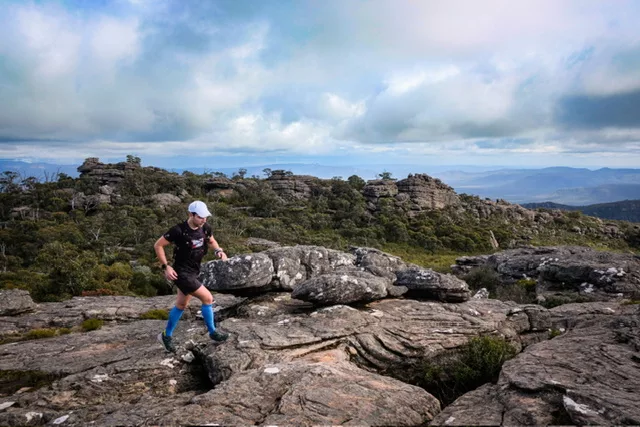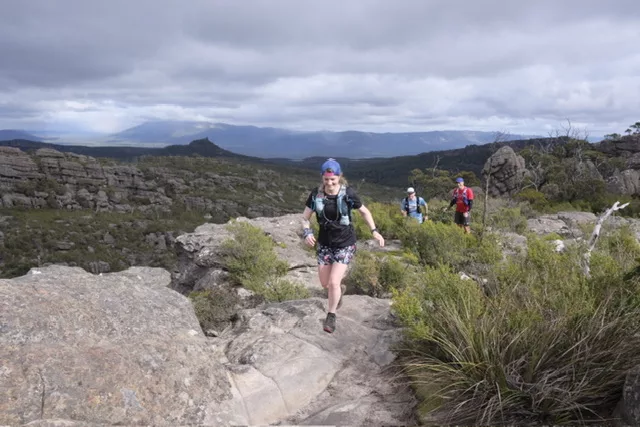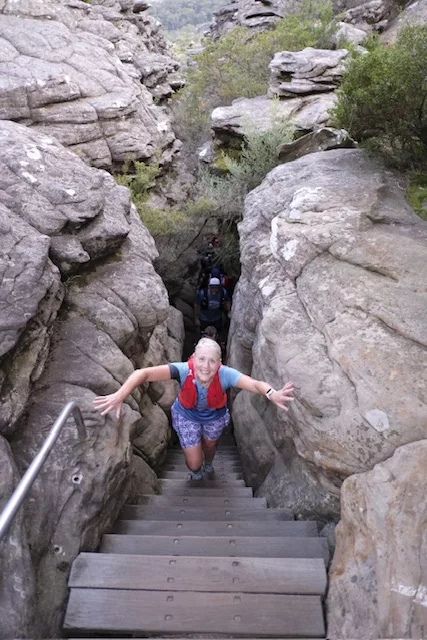The geological sandstone rock formations at the Grampians in Victoria, Australia, were shaped through a series of intricate processes that occurred over millions of years. Here’s an overview of how these formations came to be:
- Deposition of Sediments: The formation of sandstone begins with the deposition of sediment, often sand-sized particles, in a particular environment. In the case of the Grampians, these sediments were likely deposited in ancient riverbeds or coastal areas.
- Compaction and Cementation: Over time, the accumulated sediments become compacted under the weight of new deposits above them. As this compaction occurs, minerals dissolved in groundwater seep into the spaces between the sediment particles, binding them together. This process is known as cementation.
- Formation of Sandstone Layers: As the sediment becomes compacted and cemented, it forms distinct layers of sandstone. Each layer represents a period of sediment deposition followed by compaction and cementation.
- Uplift and Erosion: Geological forces, such as tectonic activity and uplift, can push the sandstone layers upward. Once the sandstone is exposed at the Earth’s surface, weathering and erosion processes begin to shape the rock. Wind, water, and temperature changes break down the rock’s surface.
- Formation of Features: Erosion carves out various features in the sandstone, such as valleys, cliffs, and rock formations. Over time, the rock becomes more susceptible to weathering due to its exposure at the surface.
- Differential Erosion: Different layers of sandstone have varying resistance to erosion based on their composition and compactness. Softer layers erode more quickly, creating distinctive patterns and shapes in the rock formations. This is why you often see intricate patterns and overhangs in sandstone landscapes.
- Creation of Unique Landmarks: The combination of differential erosion, weathering, and the resistant nature of sandstone leads to the creation of iconic landmarks like rock arches, towering cliffs, and other distinctive formations found in the Grampians.
Throughout this process, the geological history of the region unfolds, revealing layers of sedimentary rock that hold clues to past environments and geological events. The Grampians’ sandstone formations provide a remarkable glimpse into the Earth’s ancient past and the ongoing forces that shape our planet’s landscape.
Come check out the stunning geology of Gariwerd on a Grampians Peaks trail tour with us
https://trailbus.com.au/product-tag/peaks-trail/


